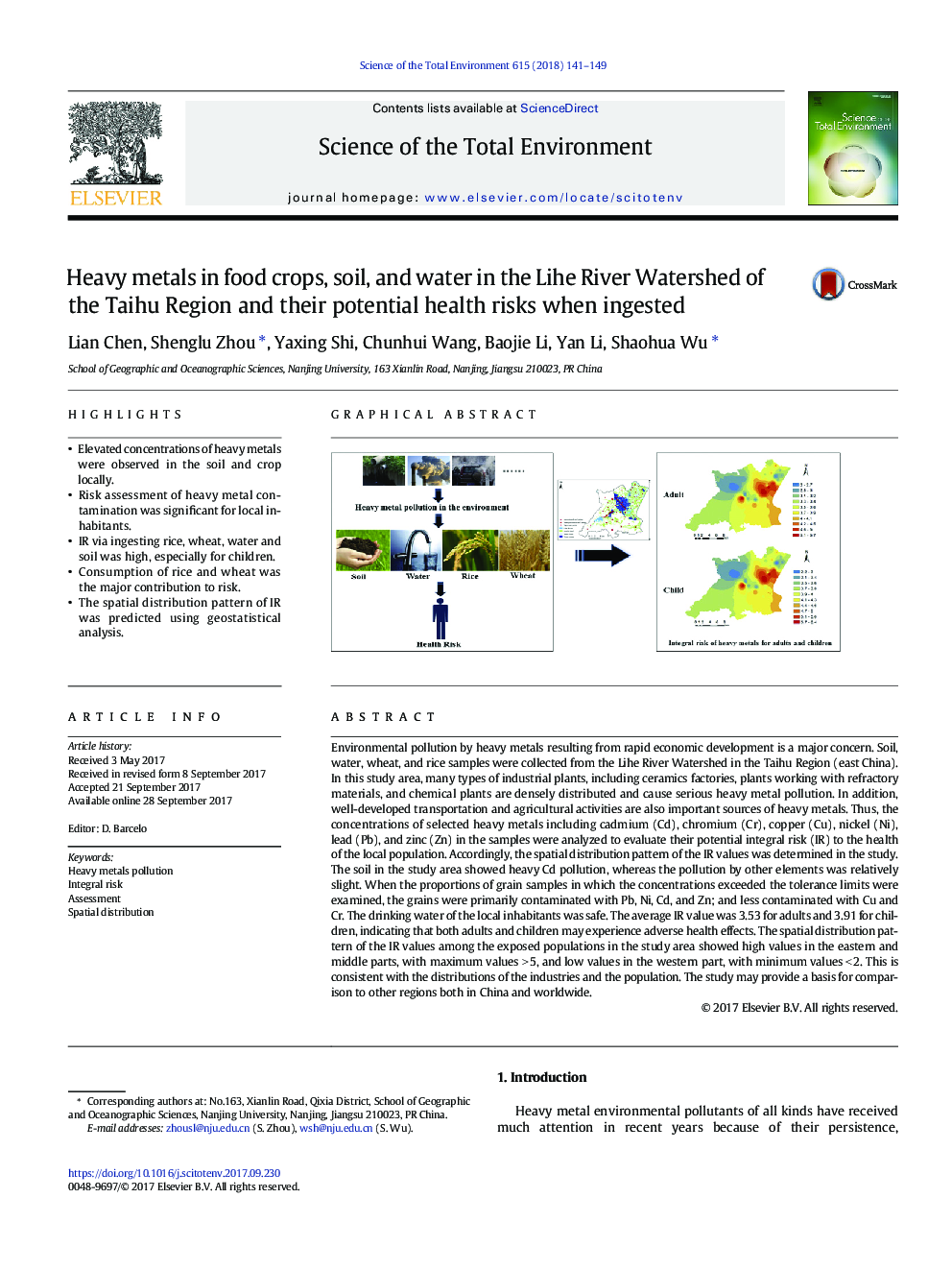| Article ID | Journal | Published Year | Pages | File Type |
|---|---|---|---|---|
| 5749768 | Science of The Total Environment | 2018 | 9 Pages |
â¢Elevated concentrations of heavy metals were observed in the soil and crop locally.â¢Risk assessment of heavy metal contamination was significant for local inhabitants.â¢IR via ingesting rice, wheat, water and soil was high, especially for children.â¢Consumption of rice and wheat was the major contribution to risk.â¢The spatial distribution pattern of IR was predicted using geostatistical analysis.
Environmental pollution by heavy metals resulting from rapid economic development is a major concern. Soil, water, wheat, and rice samples were collected from the Lihe River Watershed in the Taihu Region (east China). In this study area, many types of industrial plants, including ceramics factories, plants working with refractory materials, and chemical plants are densely distributed and cause serious heavy metal pollution. In addition, well-developed transportation and agricultural activities are also important sources of heavy metals. Thus, the concentrations of selected heavy metals including cadmium (Cd), chromium (Cr), copper (Cu), nickel (Ni), lead (Pb), and zinc (Zn) in the samples were analyzed to evaluate their potential integral risk (IR) to the health of the local population. Accordingly, the spatial distribution pattern of the IR values was determined in the study. The soil in the study area showed heavy Cd pollution, whereas the pollution by other elements was relatively slight. When the proportions of grain samples in which the concentrations exceeded the tolerance limits were examined, the grains were primarily contaminated with Pb, Ni, Cd, and Zn; and less contaminated with Cu and Cr. The drinking water of the local inhabitants was safe. The average IR value was 3.53 for adults and 3.91 for children, indicating that both adults and children may experience adverse health effects. The spatial distribution pattern of the IR values among the exposed populations in the study area showed high values in the eastern and middle parts, with maximum values >Â 5, and low values in the western part, with minimum values <Â 2. This is consistent with the distributions of the industries and the population. The study may provide a basis for comparison to other regions both in China and worldwide.
Graphical abstractDownload high-res image (130KB)Download full-size image
